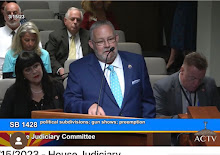In the rich annals of United States Marine Corps history, there are few units as storied as the Marines of 1/7. This battalion, known as the "First Team," has demonstrated a fighting spirit that resonates across decades, embodying tenacity, resolve, and a fierce loyalty to one another. Their steadfastness was tested to the fullest during the Korean War at the Chosin Reservoir, earning a place in Marine Corps lore and inspiring future generations to uphold their unbreakable spirit.
On this day in 1950, the Marines of the 7th Marine Regiment,
1st Marine Division, began an arduous journey from the port of Hamhung to the
Chosin Reservoir. Moving through the unforgiving terrain of North Korea’s
mountains, they set out on what would become a brutal test of endurance and
survival. Facing temperatures that plunged as low as 35 degrees below zero and
surrounded by numerically superior enemy forces, the Marines fought with
unparalleled resilience. It was here that legendary Marine Lieutenant General
Lewis "Chesty" Puller made the defiant declaration, "We are
surrounded. They can’t get away from us now!"
This indomitable spirit at Chosin remains a defining moment
for the Marines of 1/7. The regiment's legacy of fortitude has continued to
shape the character of the First Team, as demonstrated by their unwavering
resolve in subsequent conflicts, including the Gulf War, where Weapons Company,
1/7 fought under the command of then-LtCol James Mattis. This ethos of fierce
determination and loyalty to fellow Marines continues to serve as a beacon for
the Marines of today.
The Frozen Chosin
The Battle of Chosin Reservoir tested the limits of human
endurance. Despite being vastly outnumbered and enduring sub-zero temperatures
that made even the most basic movements arduous, the Marines of 1/7 showed no
inclination to give up ground. Their resolve and commitment to each other were
evident as they fought through the enemy encirclement and escaped what seemed
an inescapable fate. The spirit of "no man left behind" was
manifested as Marines carried their wounded comrades, enduring a grueling
78-mile march to the sea to escape the surrounding Chinese forces.
This "frozen" battleground remains emblematic of
1/7's resilience. For the Marines, the brutal cold, lack of supplies, and
overwhelming enemy forces were challenges that needed to be overcome—not
reasons to retreat. This fighting spirit became a cornerstone of the First
Team’s ethos, one that would be called upon again and again throughout the
years in wars across the globe.
Upholding a Legacy in the Gulf War
Decades later, during the Gulf War, 1/7
found themselves under the command of then-LtCol James Mattis, a leader known
for his own fierce resolve and devotion to his Marines. Under his leadership,
the First Team brought the legacy of Chosin to the sands of Kuwait and Iraq.
LtCol Mattis, deeply aware of the battalion’s storied past, expected no less
than excellence from his Marines. He inspired them to carry the legacy of
Chosin into the modern era, emphasizing the same tenacity and strength that had
defined their predecessors.
The Gulf War presented its own unique challenges, from the oppressive heat of the desert to the rapidly evolving battlefield. Yet, the Marines of 1/7 showed the same commitment to each other and to the mission that had become the hallmark of their unit. With grit and professionalism, they exemplified the First Team's enduring spirit, further cementing their place within the Marine Corps’ esteemed history. It was here after engaging the Iraqi forces to the front, the battalion was ambushed from the rear. Weapons Company 81s split the gun line and engaged the enemy in two separate directions at once, routing the enemy in true Marine fashion.
The Enduring Spirit of the First Team
The legacy of the First Team is one of unity, endurance, and
an unwavering commitment to fellow Marines. For the men who fought at Chosin,
their sacrifices became the bedrock upon which future generations of 1/7 would
stand. It is a legacy that has been honored and carried forward by every Marine
who has served with the First Team, and it continues to inspire new generations
to live up to the high standards set by their forebears.
From the frozen mountains of Korea to the scorching deserts
of the Middle East, the Marines of 1/7 have consistently proven their resolve
in the face of overwhelming odds. The tenacious spirit of the Marines of 1/7
will continue to live on in every Marine who wears the Eagle, Globe, and
Anchor, ensuring that the ethos forged at Chosin Reservoir remains alive and
unyielding.
I am proud to stand with my brothers as members of First
Team.
Semper Fi.









